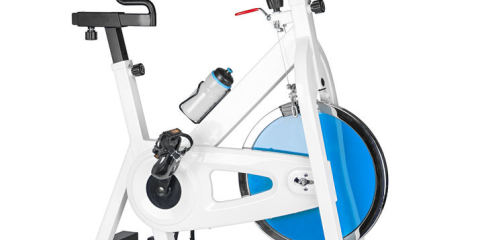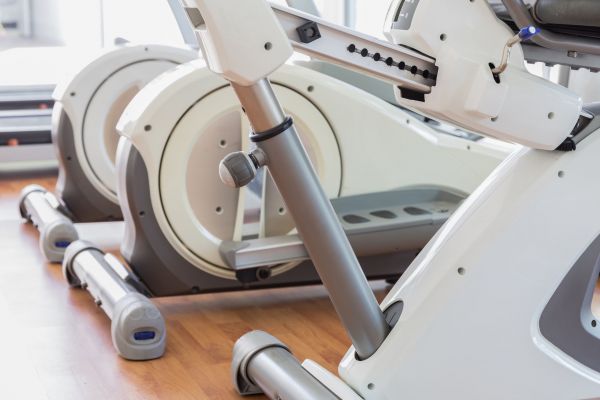A stationary exercise bike is not the easiest item to pack up and ship. Typically, they don’t break down into small, convenient-to-pack parts and they often require tools to disassemble. However, decades in the shipping industry have given us enough experience shipping awkward, heavy items to pass on a few tips to help you get the job done right.
Follow these steps to get your stationary bike ready to ship:
Step-by-Step Guide to Prepping Your Stationary Bike for Shipment
-
Clean your stationary bike thoroughly.
-
Take high-resolution photos of your bike from every angle. This will help you in a couple of ways:
- First, when you reassemble your bike after delivery, photos will help you see how everything should fit together.
- Second, in the event your bike is damaged, photos will help you determine where the damage occurred.
-
Remove as many moving and protruding parts as possible. If you have the manufacturer’s assembly manual, this will make the job much easier. If you’ve lost it somewhere along the line, check the manufacturer’s website to see if it has an online or downloadable version, or call to request a replacement manual.
- Pedals, pedal straps, and pedal hardware can be put in a plastic bag, wrapped with bubble packaging material, and placed in a small shipping box. Be sure to mark the box with the contents.
- Handlebars and seats should be inserted in a poly bag (to prevent dust and dirt contamination), wrapped in bubble packaging (to prevent damage and protect metal surfaces) and then placed in shipping boxes along with the associated hardware.
- Removable control panels should also be bagged and then wrapped with special care. Electronic componentry is much more susceptible to damage than metal parts, so they must be carefully protected. The control panel should then be placed in a heavy-duty shipping box.
- Remove power cords or wrap and secure them to the frame.
- Remove any accessory parts (e.g., cup holders), bag them, wrap them, and place them in a shipping box labeled with the contents.
- The remaining exercise bike frame should be shippable as is. While removing legs may be possible, doing so would make the frame less stable. Unless your carrier specifically requests it, leave legs in place.
-
Cover the frame in a plastic shroud or moving blanket to protect it from damage and contaminants.
-
Once your exercise bike has been prepped for shipment, move it to a staging area — such as the garage — to give the shipper’s truck easy access. Be sure to have at least two capable adults involved in moving the frame, since it may be heavy and it will certainly be awkward to handle. Slips or drops can damage walls, doorframes or feet, so be careful at all times.
How to Select a Shipper for Your Stationary Bike
The best method of shipping an exercise bike is to use an LTL (less-than-truckload) carrier, as the item will be too large for parcel shipment. LTL carriers often specialize in certain types of materials, such as refrigerated foods, chemicals or hazardous materials. In your case, you are looking for a carrier that specializes in hard-to-handle, awkward household items. Having the right match is critical, as an LTL carrier specializing in something else won’t have the experience or equipment to transport your bike properly or efficiently. This will not only add cost, but also increase the risk of damage.
While exercise bicycles are sturdy pieces of equipment, we know from experience they can be delicate in certain ways, and that a “minor” dent in the wrong place can render your bike unusable or seriously compromised. Another important factor in carrier selection is its level of business activity in your pickup and delivery locations. If your carrier makes frequent runs to and from your locations, the delivery will proceed faster and, most likely, at a lower cost since the carrier will be able to work your delivery into its schedule very quickly. If the carrier rarely goes to your delivery area, it will have to wait until it has other jobs to combine on the truck on which your bike is being shipped. When selecting a carrier, ask yourself the following questions:
-
Does the carrier have a track record?
-
Does it provide a high level of customer satisfaction?
-
Does it make deliveries on time?
-
Does it have an excessive record of claims?
There are a lot of LTL carriers in the market; some have been in business for decades and others come and go like the wind. You can check the reliability of LTL carriers by:
-
Reviewing the carrier’s website, especially for factual information about on-time deliveries, capabilities and company history
-
Checking with the Better Business Bureau for rating and claims information
-
Reviewing the carrier’s website and public review sites for customer reviews. Customer reviews are often far more telling than the carrier’s sales collateral when it comes to judging customer satisfaction.
You also will want to make sure your carrier has adequate insurance coverage for your stationary bike. If there are gaps in the coverage, the carrier may be able to obtain additional coverage, or you can obtain it through a third party. Be sure to get itemized estimates from each carrier. Be wary of non-transparent bids that hide upcharges. Keep in mind, though, some upcharges may apply and are legitimate. For example, if your bike is being picked up in a penthouse condo in a congested urban neighborhood, most LTL carriers will charge more to make this time-consuming pickup.




